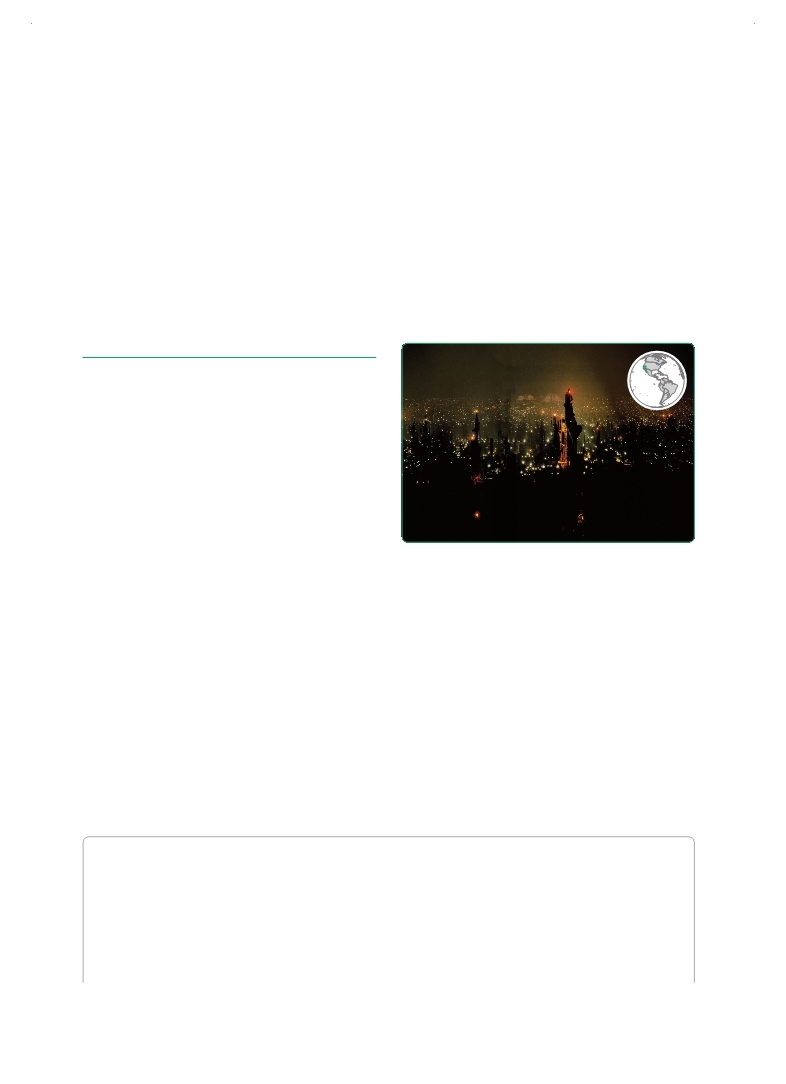 |
Global Assessment Report on Disaster Risk Reduction 2015
Making development sustainable: The future of disaster risk management |
 |
Global Assessment Report on Disaster Risk Reduction 2015
Making development sustainable: The future of disaster risk management |
|
|

214
Part III - Chapter 11
11.1 Blade Runner and the
future city
Speculative urban capital is invested in modern enclaves, while the low-income majority has access only to informal or sub-standard urbanization. The concentration of investment in urban centres drives intensive risk, while high levels of urban income inequality shape patterns of extensive risk.
Blade Runner is a neo-noir science fiction movie made in 1982 and set in a fictional Los Angeles in 2019. The movie painted a horrific portrait of future urban settings, with a powerful elite living in gleaming towers while the majority live at ground level in a toxic, polluted, dangerous and collapsed environment. Science fiction is just that: fiction. It is highly unlikely that Blade Runner will provide an accurate portrayal of life in Los Angeles—or that of any other major metropolitan area, for that matter—in 2019. However, reality does tend to imitate art. Current trends in
urban development point to futures that resemble elements of the imagined world of Blade Runner (Figure 11.1).
For example, a number of larger cities in subSaharan Africa are currently being re-imagined as global cities that could become magnets for investment (Box 11.1). Described as smart cities
Figure 11.1 The 2019 Los Angeles cityscape as imagined in Blade Runner
(Source: http://img.4plebs.org/boards/tg/image/1397/22/1397229362415.jpg.1)
Box 11.1 Urban futures in Africa
As urbanization mirrors economic growth, it often concentrates risk in hazard-exposed locations. In most low and middle-income countries it is also usually characterized by unequal access to urban space, infrastructure, services and security. This generates new patterns of both extensive and intensive disaster risk, particularly in informal settlements with deficient or non-existent infrastructure and social protection, and high levels of environmental degradation.
While the HFA has provided ample space for countries to engage in risk-sensitive urban development and some success stories have emerged, the rapid expansion of urban populations and weakly regulated investment flows remain a key challenge, particularly in low and middleincome countries.
Over the last 5 to 6 years, new visions for urban futures have been driving plans for the development of several African cities. Major projects within existing urban centres2 or entirely new satellite cities are inspired by high-profile city investments in Dubai, London and Singapore, with significant private-sector involvement. These developments and commercial centres include Hope City, a US$10 billion development to be built outside Accra in Ghana, and Tatu City, a development planned on coffee-producing land outside Nairobi (Figure 11.2). Such new hypermodern cityscapes would enable those who live and work in them to largely avoid the dysfunctional infrastructure, insecurity and poverty that characterizes many existing urban areas, echoing some of the ideas put forward for a new generation of charter cities.3
|
 
Page 1Page 10Page 20Page 30Page 40Page 50Page 60Page 70Page 80Page 90Page 100Page 110Page 120Page 130Page 140Page 150Page 160Page 170Page 180Page 190Page 200Page 204Page 205Page 206Page 207Page 208Page 209Page 210Page 211Page 212Page 213Page 214Page 215->Page 216Page 217Page 218Page 219Page 220Page 221Page 222Page 223Page 224Page 225Page 226Page 227Page 228Page 230Page 240Page 250Page 260Page 270Page 280Page 290Page 300Page 310
|
|
 
|
 
|
